Empathy not only serves your beneficiaries; it’s also essential to building a passionate team.
Let me guess.
You got involved with your nonprofit because you wanted to make a difference.
You dove in, giving your all, pouring yourself into improving someone else’s situation.
You’re not interested in earning credit for good deeds.
You don’t seek recognition or accolades.
You serve others because you genuinely care.
You’re passionate about helping those in need.
But it’s not just passion that motivates you.
It’s your empathy for other people.
When you see a social injustice or someone struggling, you feel compelled to take action.
In nonprofits, empathy is a major key to success.
It helps us to develop relationships built on trust and humanize situations we may not otherwise understand.
It’s like Elvis Presley sang, “Before you abuse, criticize and accuse, walk a mile in my shoes.”
By imagining yourself in another’s position, you’re able to better assess their situation and develop solutions to their problems.
Not only does empathy help you serve your constituency.
It can help you develop a strong team who is equally passionate about achieving your goals.
Empathy can also draw in donors and volunteers to support your cause.
The best way to champion your cause is to raise awareness.
And the key to awareness is empathy.
EMPATHY VS SYMPATHY
When you see someone going through a hard time, you may think, “Boy, I sure feel sorry for that guy.”
That’s not empathy.
That’s sympathy.
With sympathy, you show compassion and feel pity and sorrow for someone else.
It doesn’t place you in their situation.
Empathy runs deeper than that.
Empathy is the true understanding of another’s plight, either because you’ve been there yourself or because you can imagine what the experience must be like.
The Royal Arts Society created a powerful video, “Brené Brown on Empathy,” that emphasizes the importance of connection in terms of empathy.
In the presentation, research professor Dr. Brené Brown identifies the key characteristics of empathy as:
- Perspective Taking: We must be able to see another’s point of view.
- Refraining From Judgment: By remaining open minded and neutral, we can better understand why someone has made the choices they have or is in the situation they’re in.
- Recognizing Emotions in Others: Regardless of their situation, people have feelings about who they are and how they’ve arrived at this point in their life.
- Communicating Those Feelings: We serve as champions to help express their thoughts about their state.
Empathy can be difficult because it requires us to face our own vulnerabilities.
However, in doing so, we can connect with others and, more importantly, be driven to take action on their behalf.
EMPATHY BUILDS A STRONG TEAM
Before a nonprofit can effectively meet the needs of its audience, it must first focus on empathy within.
Empathy is one of those abstract concepts that, when applied purposefully, can actually be a highly impactful leadership tool.
Your organization is only as strong as the people who keep it running.
A solid team who feels understood, appreciated, and valued is more likely to work harder and be driven to achieve greater results.
You can encourage optimal employee performance by engaging staff through these tips for developing internal empathy.
Tip #1: Listen to Your Team
Hearing and listening are two different things.
When team members voice their views and concerns, listen carefully to what they’re telling you.
Then, read between the lines.
Take note of body language and tone of voice.
Listen to their emotions, the context of their words, and take their message to heart.
When you talk with your team, don’t interrupt or change the subject because you have anticipated points you were prepared to make.
Listen with an open mind and be receptive to what they have to say.
When they’re finished, discuss together to come up with a solution that benefits everyone.
Tip #2: Give Your Undivided Attention
When you communicate with your team, avoid multitasking.
Checking email or looking at your phone while someone is sharing their feelings with you doesn’t instill trust or help strengthen a connection.
Give your teammates your undivided attention.
After all, if the tables were turned, you wouldn’t appreciate it if they were only half-listening.
By being fully present with your team, they’ll feel valued and, more importantly, heard.
Tip #3: Connect on a Personal Level
Another way to build relationships is to connect with people personally.
Look them in the eye and smile at them when they see you.
Know about their family members or general hobbies and interests.
Call them by name when you pass them in the hallway.
These small yet important details help forge strong bonds with the people who help you help others.
Tip #4: Give Genuine Praise
Everyone likes to feel appreciated.
When someone has a personal success, give them some love.
Let the rest of the team know with genuine words of recognition.
Not only do heartfelt messages mean more.
They inspire people to do even better, work harder, and most importantly, want to bring the organization success.
2 POWERFUL EXAMPLES OF HOW EMPATHY EARNS EXTERNAL SUPPORT
The ultimate goal of any nonprofit is to raise awareness and gain support for its cause.
Empathy is the key to engaging donors to take action.
Unfortunately, not all nonprofits help cute, defenseless animals or raise funds to battle life-threatening illnesses.
The truth is, nonprofits tackle tough, messy issues that can be uncomfortable to discuss and difficult for people to identify with.
All the more reason to draw on empathy to develop a donor base.
Luckily, with so many technological channels available, there are several ways to share your message and help the public understand your cause.
From video clips and research articles to photographs and interactive virtual reality, nonprofits can share moving testimony that allows viewers to more effectively imagine themselves in those situations.
Here are two examples of nonprofits who use empathy to overcome society’s preconceived opinions about difficult topics and build a following of external support.
Example #1: Fight the New Drug
Based in Utah, Fight the New Drug is raising awareness about the impact of pornography consumption on people, relationships, and society as a whole.
Fight the New Drug has their work cut out for them.
Pornography is a socially taboo subject, and one that many people already have strong opinions about.
The nonprofit has to get people to overlook their previous misgivings, cast aside judgment, and approach this problem with an open mind.
Their website’s home page shares their message in numerous ways to engage and educate their audience about the harmful effects of pornography.
A series of interactive videos portrays powerful statistics and research findings supporting their mission.
They also offer free access to their three-part documentary series that shares personal stories of individuals’ struggles with addiction, humanizing a somewhat abstract subject.
Several articles, studies, and blueprints for conversion are hosted on their site.
The public can easily read about the dangers the nonprofit is trying to combat.
Fight the New Drug’s materials help people connect with the individuals impacted by this issue.
They can put a face to the problem, imagine what these people are going through, and be compelled to help by joining their movement.
Example #2: Operation Underground Railroad
This group’s mission is to eradicate child sex trafficking through rescue missions and recovery planning.
Talk about uncomfortable.
I think we’re all sympathetic to this issue, because it is indeed awful to think about.
Most people don’t put themselves in those shoes because, frankly, those are awful shoes to be in.
That’s why O.U.R. leans heavily on empathy marketing.
Their website is full of success stories that portray the experience real children have gone through.
The stories are compelling because they’re emotional.
Several accompany images of the individuals involved.
Some are written from the perspective of the parents of children who were abducted.
These tellings, while difficult to read, are extremely effective in allowing readers to sort of virtually experience the emotional toll on the victims involved.
We can imagine the sense of dread and panic the moment a parent realized their child was missing.
O.U.R. also explains that victims don’t choose this lifestyle, and outline how they are groomed, manipulated, and forced into this situation.
By removing fault, the organization helps encourage empathy from their audience.
O.U.R.’s site also shows the impact that their nonprofit has on the battle they face.
Statistics reveal how important their cause is and how effective they can be when they have the means.
Through photos, videos, success listings, and first-person accounts of experiences with human trafficking, O.U.R. engages visitors and helps them develop empathy for the victims and the organization.
This results in building a loyal following who support the organization in several ways, including:
- Donations
- Volunteers
- Host an Event
- Join the Club
All of this helps the nonprofit continue its mission and make an impact on a terrible societal problem.
ARE YOU USING EMPATHY?
There’s no doubt in my mind you’re passionate about your nonprofit.
If you weren’t, you wouldn’t be dedicating yourself to your organization’s mission.
But passion alone won’t drive your team and the public to act on your behalf.
By creating opportunities to connect with people and build a shared experience, you’ll help instill empathy in the people who matter the most to your group.
Your team and your donors.
Without their understanding and their support, you won’t be able to meet the demands of the task at hand.
Believe me, I completely understand.



